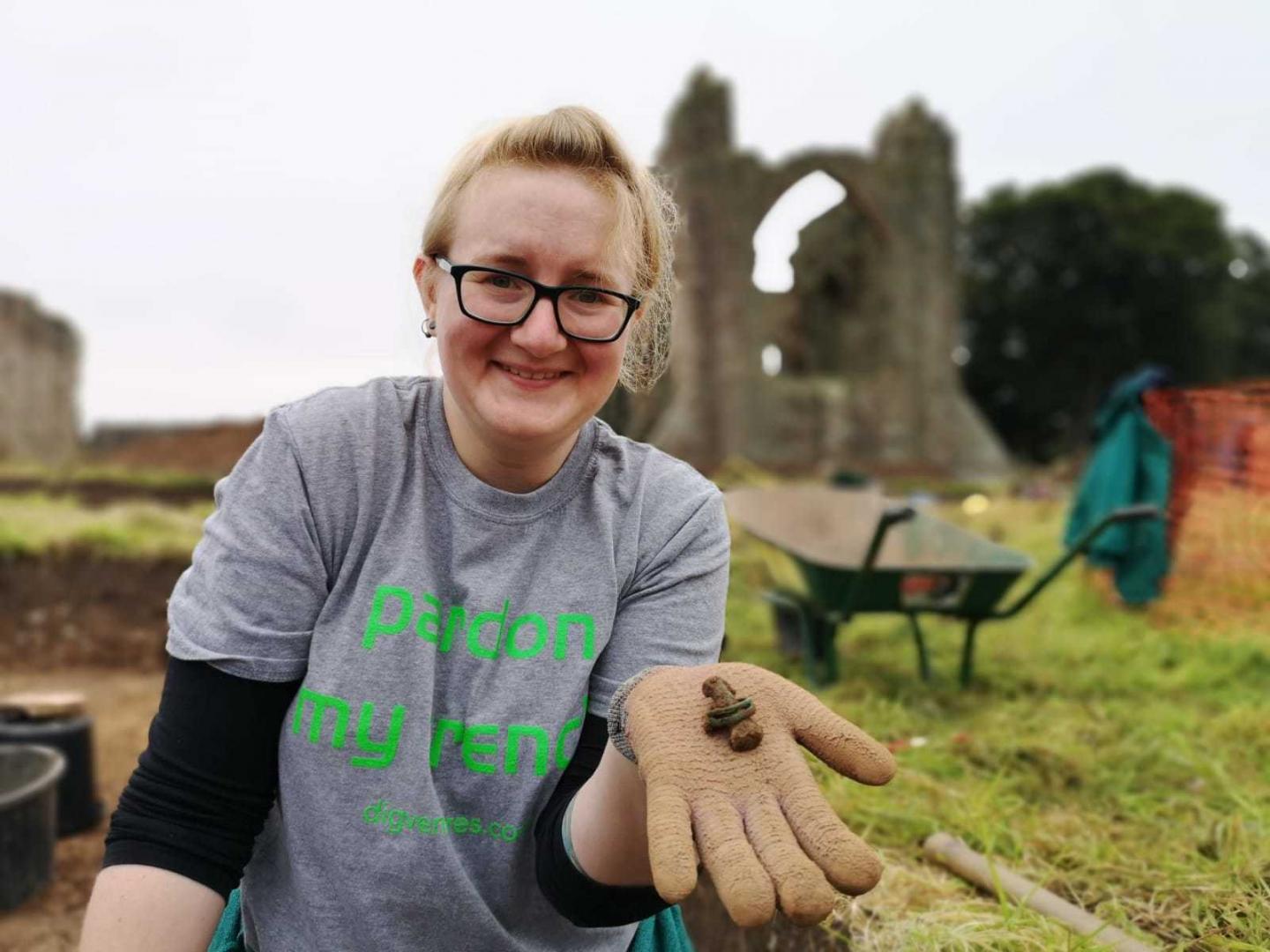A COMMUNITY archaeology group from Teesdale has helped uncover a rare 1,200-year-old “king” game piece at Lindisfarne.
The Barnard Castle-based DigVentures made the discovery while working with Durham University during a dig at the Northumberland island monastery late last year.
It’s only the second such piece to be been found in the British Isles. The item has been described as priceless.
Lisa Westcott Wilkins, managing director of DigVentures, said the piece, made from bright blue glass crowned with a ring of five white bobbles, was likely a kingpiece from the game of tafl.
[media=2]
Tafl is a family of games derived from the Roman war game Ludus Latrunculorum, and played in Britain, Denmark, Iceland, Ireland, Norway and Sweden before the arrival of chess in the 11th and 12th centuries.
Ms Westcott Wilkins added: “Other tafl pieces made of wood or bone have been found in elite burials from Anglo-Saxon England, but only one other glass tafl piece has been found in the British Isles, at the Pictish hillfort at Dundurn in present-day Scotland, making this Lindisfarne piece only the second to have been discovered.
“Many people will be familiar with Viking versions of the game, and I’m sure plenty of people will wonder whether this gaming piece was dropped by a Viking during the attack on Lindisfarne, but we believe it actually belonged to a version of the game that was played by the elites of northern Britain before the Vikings ever set foot here.
“The Romans were very fond of giving gaming pieces as gifts to ‘barbarian’ princes, and as the game spread out of the Roman empire, different societies developed their own variations on the rules, including northern Britain.
“In fact, we believe the piece had probably originally been buried with a member of the Northumbrian elite, whose grave was later disturbed.”
Archaeologists believe the item dates to between 700AD and 900AD. Now in its fourth season, the crowd-funded dig has revealed part of a cemetery and a workshop associated with the monastery, both dating to between 700AD and 1000AD when activity on the island was at its peak.
The investigation also uncovered two copper finger rings, a copper pin, small bronze buckle, and evidence that the workshop may have been related to metal-working, for which the monastery was famous. Other discoveries include a set of rare early medieval carvings known as “namestones” , each of which commemorates someone who was buried on the island during this period.
A number of Anglo-Saxon coins were also found, including a coin minted for Aethelred I, king of Wessex from AD 865 to 871.
DigVentures will be returning to Lindisfarne in September and is inviting more people to get involved.
Ms Wescott Wilkins said: “Our team of professional archaeologists works alongside members of the public who want to make a real contribution to archaeological research.
“We provide all the training and supervision that individuals need in order to dig with our team or work with artefacts in our finds room, and experience what it’s like to make an archaeological discovery while learning in-depth how the process of archaeology actually works.
“It’s really thanks to them that this discovery has been made in the first place. In fact, any headline should probably read ‘Archaeologist’s mum finds 1,200 year old gaming piece’, because it was actually found by our head of fieldwork’s mother, Heather Casswell, who was taking part in the dig while visiting her son on her birthday.”
Anyone interested in taking part can find out more at digventures.com/projects/
lindisfarne






